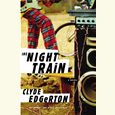Voices of Stone
Poetic interpretations of a master sculptor’s work
Elizabeth Spires, an award-winning poet, is also a respected children’s author. Her 1999 book, The Mouse of Amherst, introduced kids to the poems of Emily Dickinson. In I Heard God Talking to Me, Spires sets about acquainting youngsters with the work of another great American artist, sculptor William Edmondson. Through a series of 23 simple, often whimsical poems, Spires gives voice to some of Edmondson’s creations. Her verse appears alongside full-page photographs of the sculptures that inspired them. Portraits of Edmondson by renowned photographers Louise Dahl-Wolfe and Edward Weston are also included.
William Edmondson was the son of freed slaves. Born on a plantation near Nashville in 1874, he was denied an education and worked at menial jobs until his mid-50s, when a religious vision inspired him to begin carving figures out of the limestone he scavenged from local quarries. His work eventually came to the attention of the New York art world, and was featured in major exhibitions before his death in 1951. Despite critical acclaim, he made little money from his art, and his hometown was slow to recognize his talents. Ironically, he is regarded today as one of the finest artists Tennessee has produced.
The facts of Edmondson’s life are essential to understanding his work, particularly its religious themes. Spires outlines his biography in a brief essay, which is the only part of the book that young readers might have trouble navigating. Although Spires uses simple language, the realities of life for a black man in the segregated South and the nature of Edmondson’s religious inspiration are complicated subjects that children under 12 may need to have explained at greater length than this profile of Edmondson provides.
Spires’ poems, however, are accessible even to very young children. Most of them are lively first-person expressions from the sculptures. They have a confidential tone, a “just between you and me” quality that will appeal to most kids. For example, Edmondson’s fanciful Angel With a Pocketbook offers a good-natured rant in Spires’ accompanying poem:
Of course I’d rather be in heaven
than you-know-where, but I’ll confess
sometimes I miss how real the earth was,
miss lipstick, hairdos, the sound of my high heels
click-click-clicking on the sidewalk,
pocketbook swinging at my side.
There are more somber poems, including a few such as “Hands” and “Ararat,” in which Spires speaks for the artist rather than his creations, but overall the book has a light touch.
Although the stark, black and white layout of the book won’t have immediate eye appeal for most young readers, I Heard God Talking to Me is an excellent introduction to Edmondson’s work. Spires’ poems are an invitation to imaginative engagement with the sculptures, and they’ll likely inspire children to create their own stories in response.


